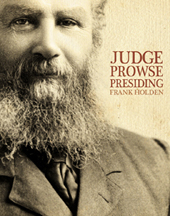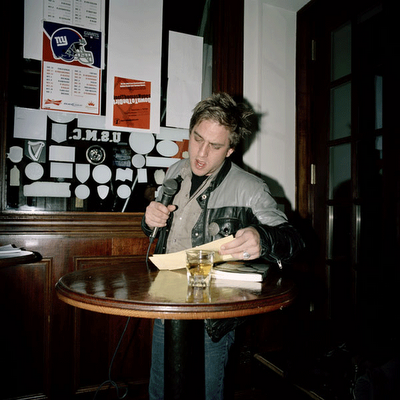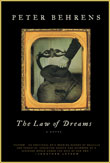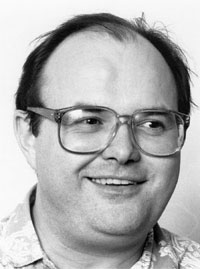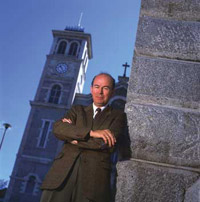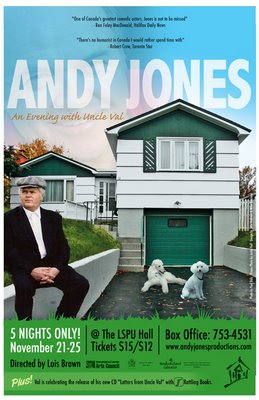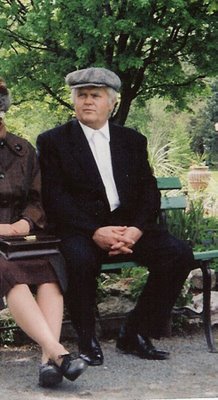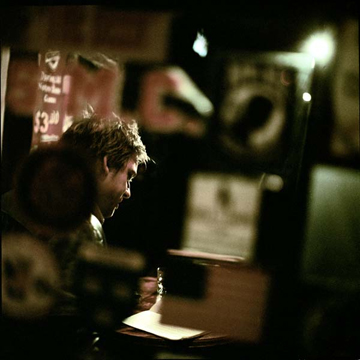The following text is quoted from The Papers of CODCO (Theatre Company) COLL-121 Arranged and Described by Gail Weir, Archives and Manuscripts Division, Memorial University of NewfoundlandDecember 1998
A Brief History of CODCO
David Weiser and Dudley Cox, co-founders of the Newfoundland Travelling Theatre Company (NTTC), played a significant role in the history of CODCO in that they hired all of the performers who would later form the CODCO troupe in the early 1970s to tour small communities on the island portion of Newfoundland. Taking part in NTTC's first production, the British farce "See How They Run," June 27 - July 26, 1972, were Tommy Sexton, Mary Walsh, Andy Jones, Diane Olsen and Bob Joy, among others. NTTC's second tour in August 1972 was with the play "Pools Paradise," and featured Greg Malone, Mary, Diane, and Tommy. Cathy Jones, Tommy and Diane toured with "Starrigan" in 1973. They travelled the back roads of the island in two Volkswagen vans and slept most nights on school gymnasium floors. They were paid $40 a week plus meals. This experience not only exposed the group of "townies" to outport life first hand, providing them with grist for their creative mills, but gave them a taste of the precarious life of acting, and prepared them for the provincial tour of their own show "Cod On A Stick" in the summer of 1974.
In a very real sense, the life of CODCO as a working theatre troupe began and ended with Tommy Sexton. His influence on the group was summed up by Sandy Morris: "Tommy was one of those great personalities who dictates so much of how you lead your life. He had so much energy that you just got sucked along with whatever he wanted to do." He had quit school after Grade 10 and, against his parents' wishes, went to Toronto in late summer 1973 with Diane Olsen to pursue a career in acting. He and Diane tried out for a show with Paul Thompson, director of Theatre Passe Muraille. They did not get the parts because of their accents, but Paul was impressed with them and gave them $300 to write their own play. They recruited their roommates, Cathy Jones and Paul Sametz. The plan was to do the "Punch and Judy" show they had worked on at NTTC along with some other pieces they had written, but they needed direction, which they sought from Greg Malone. He agreed and ended up writing himself into the show. White helped with the writing but did not want to be on stage, so she talked Mary Walsh into joining. Thus CODCO was born. The name CODCO was not used until they had to design a program, at which time Greg came up with CODCO (Cod Company), which referred to the fact that they were codding people. The space in which they were to perform was the annex of a small church, a tiny area with steps to sit on and a main door which opened right onto the little stage. Their first show, "Cod On A Stick," debuted in October and, although a brief 30 minutes, it was a hit. In it, they made fun of the way mainlanders see Newfoundlanders. They expanded it to 45 minutes and ran it again during November and December and again in January 1974. CBC Radio paid their way home in February so that they could record it live in front of a Newfoundland audience. It was an even bigger hit in St. John's. 1974 was the 25th anniversary of Newfoundland's confederation with Canada and grant money was made available to bring outside performers into the province. CODCO lobbied for a share and received $8000 with which they bought a van to tour the show around the province. Christian Decker was hired as driver and manager for this tour. Mary returned to Ryerson and was replaced on the tour by Maisie Rillie. Cathy was working with NTTC for the first few weeks of the tour, so White filled in for her. Bob Joy returned from Oxford to join the tour. Andy Jones joined in time for the August 1974 filming of the show which was staged at Memorial University's Little Theatre. For the next nine productions, the troupe consisted of Andy Jones, Cathy Jones, Bob Joy, Greg Malone, Diane Olsen, Tommy Sexton and Mary Walsh, collectively referred to here as "all seven members," with Maisie Rillie as business manager and White performing technical duties. When Bob and Diane left the troupe in 1976, the remaining five members decided to retain CODCO as a limited liability company, under the aegis of which they worked individually and in various forms of togetherness over the next 10 years. In 1986, the CODCO television series brought these five back to work together on a stable basis for the next five years and, when the show went national in 1988, they began renting office space in St. John's, first above the Ship Inn bar on Duckworth Street, and from May 1989 at 177 Water Street on the third floor of the London, New York and Paris building. Andy Jones left the television series in October 1990 after a dispute with CBC about some of his material being censored, but the remaining four members stayed together for another two seasons.
In November 1992, The Plays of CODCO, edited by Helen Peters with the co-operation of all seven original members, was published by Peter Lang. This is the definitive version of their five major stage shows and, for the members of CODCO, represented the pinnacle of their careers. It legitimized them as writers and guaranteed their work would survive for posterity. The launch of the publication was the only time after 1976 they all appeared together in public, this time to sign copies of "their" book. Then, in December 1993, Tommy Sexton died and the troupe disbanded. With the culmination of the television show and the publication of The Plays of CODCO, the individual members of the troupe no longer felt the need to maintain an office. The office had served as a resource centre for the troupe, a place of their own where they could consult old scripts for reworking into new material and where the notes and working papers of their early stage shows could be housed during the editing process leading up to publication. In April 1994, the contents of the office were transferred to the Archives and Manuscripts Division at Memorial University and the lease was cancelled. The remaining members of CODCO went their separate ways once again: Mary Walsh and Cathy Jones began work on a new CBC national television comedy series, This Hour Has 22 Minutes, which is still (in 1999) one of the highest-rated shows in the country; Andy Jones continues to write, perform and direct for stage and television, locally and nationally; Greg Malone has branched out into more dramatic roles and social activism, writing, performing and directing stage shows locally and nationally, doing a video using his comedy to teach medical students about AIDS and, most recently, a docu-drama on the women's suffrage movement in Newfoundland.
Source of the above: The Papers of CODCO (Theatre Company) COLL-121 Arranged and Described by Gail Weir, Archives and Manuscripts Division, Memorial University of NewfoundlandDecember 1998
Andy Jones, the member of CODCO responsible for depositing the above papers with the Archives, is currently appearing on stage in St. John's, Newfoundland in An Evening with Uncle Val in which he threads some of his asides through the history of CODCO.
Letters from Uncle Val is a Rattling Books Audio CD written and performed by Andy Jones. It was released this past week with the stage show. Available online from Rattling Books, the best places to find it in St. John's are Fred's Records and the Travel Bug.
